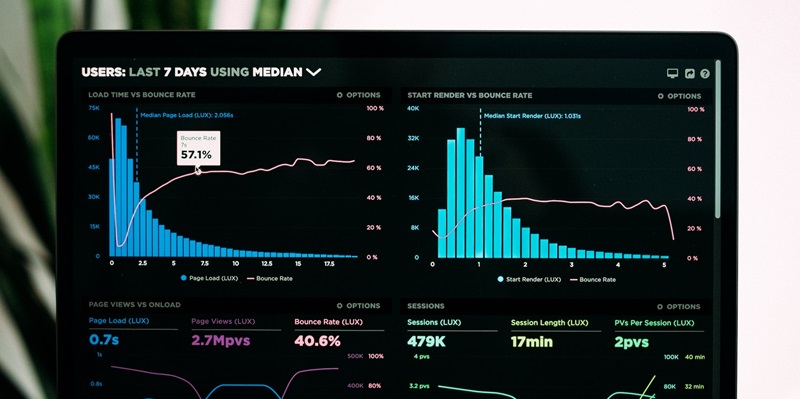In today’s highly competitive business landscape, organizations are constantly searching for ways to gain a competitive edge. One area that has emerged as a game-changer is workforce analytics. With the projected market growth difference of USD 1.85 billion between 2023 and 2027, it is evident that companies have recognized the value of leveraging data-driven insights to optimize their workforce.
Importance of efficient workforce management and recruitment
In a workforce-centric environment, efficient management and recruitment practices are paramount. The ability to identify and attract high-quality talent can significantly impact organizational productivity and success. However, this process can be challenging without the right tools. This is where workforce analytics solutions come into play, offering data-driven insights that enable organizations to streamline their recruitment processes and make informed decisions.
Insights provided by workforce analytics solutions
Workforce analytics solutions provide organizations with a comprehensive understanding of their employees. By analyzing metrics such as productivity, engagement, and retention rates, companies can gain valuable insights into the effectiveness of their workforce strategies. Armed with this data, decision-makers can identify areas for improvement and implement targeted interventions to optimize employee performance.
Prioritized areas for enhancing productivity
To drive growth and success, businesses must prioritize key areas that directly impact productivity. Talent management, employee engagement, and human capital metrics are at the forefront of these priorities. By utilizing workforce analytics, organizations can gain insights into these critical areas and unlock their full potential for improved performance.
Key features that enable informed decision-making
The effectiveness of workforce analytics lies in its ability to facilitate informed decision-making. Predictive analytics, which harnesses the power of historical data to forecast future outcomes, allows organizations to anticipate talent needs, optimize workforce allocation, and mitigate potential risks. Additionally, HR data integration ensures a holistic view of an organization’s workforce, enabling decision-makers to make well-informed choices. Performance measurement tools enable organizations to track and assess the impact of their interventions, offering valuable feedback for ongoing improvement.
Crucial analytics for strategic HR planning
Strategic human resources planning requires a deep understanding of workforce dynamics and market trends. Workforce analytics play a pivotal role in this process by offering insights into workforce planning, labor market trends, and talent acquisition analytics. By leveraging these analytical tools, organizations can align their workforce strategies with their long-term business objectives, enabling them to stay ahead of the curve in today’s dynamic business environment.
The use of workforce analytics in the retail industry
The retail industry is experiencing a transformational shift in the way it operates. By harnessing the power of workforce analytics, retailers can analyze various parameters such as customer feedback, sales productivity, and other performance metrics. These insights enable retailers to optimize their workforce, improve customer satisfaction, and drive bottom-line growth.
Regional contributions to global market growth
The Asia-Pacific (APAC) region is expected to play a significant role, contributing an estimated 33% to the growth of the global workforce analytics market during the forecast period. The region’s growing adoption of advanced technologies, coupled with the increasing importance placed on human capital management, positions APAC as a key market for workforce analytics solutions.
Key companies in the workforce analytics market
Several key players are driving innovation and shaping the future of the workforce analytics market. Accenture Plc, Automatic Data Processing Inc., Brightfield, Bullhorn Inc., Ceridian HCM Inc., Cisco Systems Inc., Cornerstone OnDemand Inc., International Business Machines Corp., Jobvite Inc., Koch Industries Inc., Kronos Inc., New Mountain Capital Group, L.P., Oracle Corp., Paycor Inc., PredictiveHR Inc., Salesforce Inc., SAP SE, Visier Inc., Workday Inc., and WorkForce Software LLC are among the prominent companies making significant strides in this space.
Projection for the business software services market
The business software services market is poised for substantial growth, with a projected increase of USD 163.56 billion at a compound annual growth rate (CAGR) of 11.23% between 2023 and 2028. This growth can be attributed to the rising demand for innovative software solutions that enhance efficiency, optimize resource allocation, and drive business performance.
As businesses navigate an increasingly complex and competitive landscape, workforce analytics has emerged as a critical tool for driving growth and success. With its ability to provide data-driven insights into workforce management, recruitment, and strategic planning, organizations can make informed decisions, optimize performance, and unlock their full potential. Embracing workforce analytics is no longer a luxury; it is an imperative for organizations aiming to thrive in the digital era.

